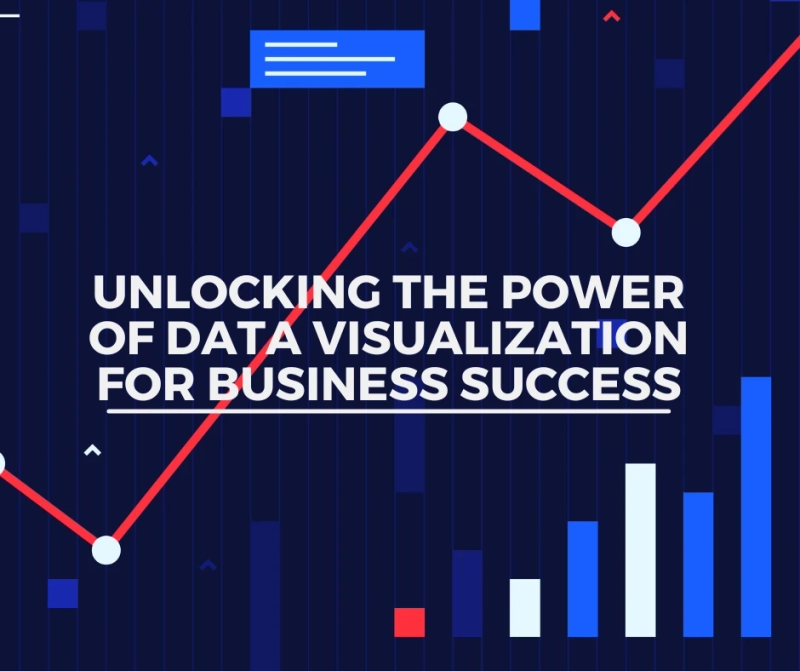In today's data-driven world, businesses are constantly seeking innovative ways to extract meaningful insights from the vast amounts of information at their disposal. One such powerful tool that has gained prominence is data visualization. This article explores the significance of data visualization in business and how it can be a game-changer for organizations aiming for success.
Introduction to Data Visualization
Data visualization involves representing data in graphical or visual formats, making complex information more accessible and understandable. This visual representation allows stakeholders to grasp insights quickly, leading to more informed decisions.
Importance of Data Visualization in Business
Enhancing Understanding
In the realm of business, where data can be overwhelming, visualization simplifies intricate datasets, enabling stakeholders at all levels to comprehend information effortlessly.
Facilitating Decision-Making
Data visualization empowers decision-makers by presenting insights in a format that is easy to interpret. This leads to quicker, more informed decisions, vital for staying competitive in today's fast-paced business environment.
Types of Data Visualization
Charts and Graphs
Visual aids like line graphs, bar charts, and pie charts offer a clear representation of numerical data, aiding in trend analysis and comparison.
Maps
Geographical data is effectively communicated through maps, providing insights into regional variations and opportunities.
Infographics
Combining text and visuals, infographics are a powerful tool for conveying complex information in a concise and engaging manner.
Tools for Effective Data Visualization
Tableau
Renowned for its user-friendly interface, Tableau allows businesses to create interactive and shareable dashboards, fostering collaboration and understanding.
Power BI
Microsoft's Power BI is lauded for its seamless integration with other Microsoft products, providing dynamic visualizations and real-time analytics.
Google Data Studio
For those preferring cloud-based solutions, Google Data Studio offers easy-to-create and customizable reports, perfect for collaboration and data sharing.
Best Practices in Data Visualization
Keep it Simple
Simplicity is key in data visualization. Avoid clutter and unnecessary complexity to ensure that the message is easily digestible.
Choose the Right Chart Type
Selecting the appropriate chart type for the data being presented enhances clarity and understanding. Bar charts for comparisons, line graphs for trends – the right choice matters.
Use Color Strategically
Color can evoke emotions and highlight key points. However, it's crucial to use it strategically, ensuring that it aids comprehension rather than causing confusion.
Examples of Data Visualization
Data visualization presents complex information in graphical or visual format, enhancing understanding. Data visualization examples include:
Bar charts display sales by region.Line graphs depict temperature trends over time.Pie charts illustrate market share among competitors.Scatter plots show correlation between variables.Heatmaps reveal website traffic patterns.Treemaps visualize hierarchical data.Radar charts compare performance across categories.
Good Data Visualization:
Good Data Visualization Examples include:
Bar Charts for Comparison:
Bar charts effectively display and compare quantities. They're easy to understand and minimize misinterpretation.
Line Charts for Trends:
Line charts are great for illustrating trends over time. They help users see patterns and fluctuations in data.
Color-Coding for Clarity:
Effective use of color can enhance understanding. It aids in highlighting important data points or distinguishing between different categories.
Interactive Dashboards:
Interactive visualizations allow users to explore data themselves. Dashboards with filters and tooltips enhance user engagement and understanding.
Bad Data Visualization:
Bad Data Visualization Examples include:
3D Pie Charts:
3D pie charts distort proportions, making it difficult to accurately compare slice sizes. A simple 2D pie chart or a bar chart is often more effective.
Inconsistent Scaling:
Axes with inconsistent scaling can mislead viewers. Ensure that axes are scaled appropriately to avoid exaggerating or downplaying differences.
Overuse of 3D Effects:
Excessive use of 3D effects, shadows, or embellishments can distract from the actual data and make interpretation confusing.
Incomplete or Missing Labels:
Lack of clear labels, axis titles, or legends can lead to confusion. Ensure that viewers can easily understand what the visualization represents.
Misleading Data Visualization:
Misleading Data Visualization Examples include:
Cherry-Picked Axes:
Manipulating the scale of axes can exaggerate or diminish the impact of trends. Always check the scale for proper context.
Truncated Y-Axis:
Truncating the y-axis can exaggerate small differences. Always start the y-axis at zero for an accurate representation.
Inconsistent Time Intervals:
Irregular time intervals in line charts can create a false impression of trends. Maintain consistency in time intervals to avoid misinterpretation.
Misleading Map Projections:
Maps using distorted projections can misrepresent geographic data. Choose map projections carefully to avoid conveying inaccurate spatial relationships.
Overcoming Challenges in Data Visualization
Data Overload
Dealing with large datasets can be challenging. Techniques and tools to handle data overload will be discussed, ensuring that visualizations remain clear and insightful.
Ensuring Accuracy
Maintaining the accuracy of data is paramount. This section will address common pitfalls and provide tips on ensuring the reliability of visualized information.
Data Visualization for Different Business Functions
Marketing
Exploring how marketers can utilize data visualization for campaign analysis, customer segmentation, and performance tracking.
Sales
Demonstrating how sales teams can benefit from visualizing customer data, sales trends, and territory performance.
Operations
Highlighting the role of data visualization in optimizing operational processes, from supply chain management to resource allocation.
Future Trends in Data Visualization
Augmented Reality Integration
The article will touch upon how augmented reality is poised to revolutionize data visualization, offering immersive and interactive experiences.
Interactive Dashboards
Discussing the growing trend of interactive dashboards that allow users to manipulate data in real-time, enhancing engagement and understanding.
How Small Businesses Can Leverage Data Visualization
Offering practical tips and affordable tools for small businesses to embrace data visualization, empowering them to make informed decisions on a budget.
Conclusion
The power of data visualization cannot be overstated in the business landscape. As organizations navigate the complexities of the modern world, unlocking insights from data through visualization becomes a crucial element for success. To enhance your career prospects in data visualization, consider enrolling in data analytics training courses.



